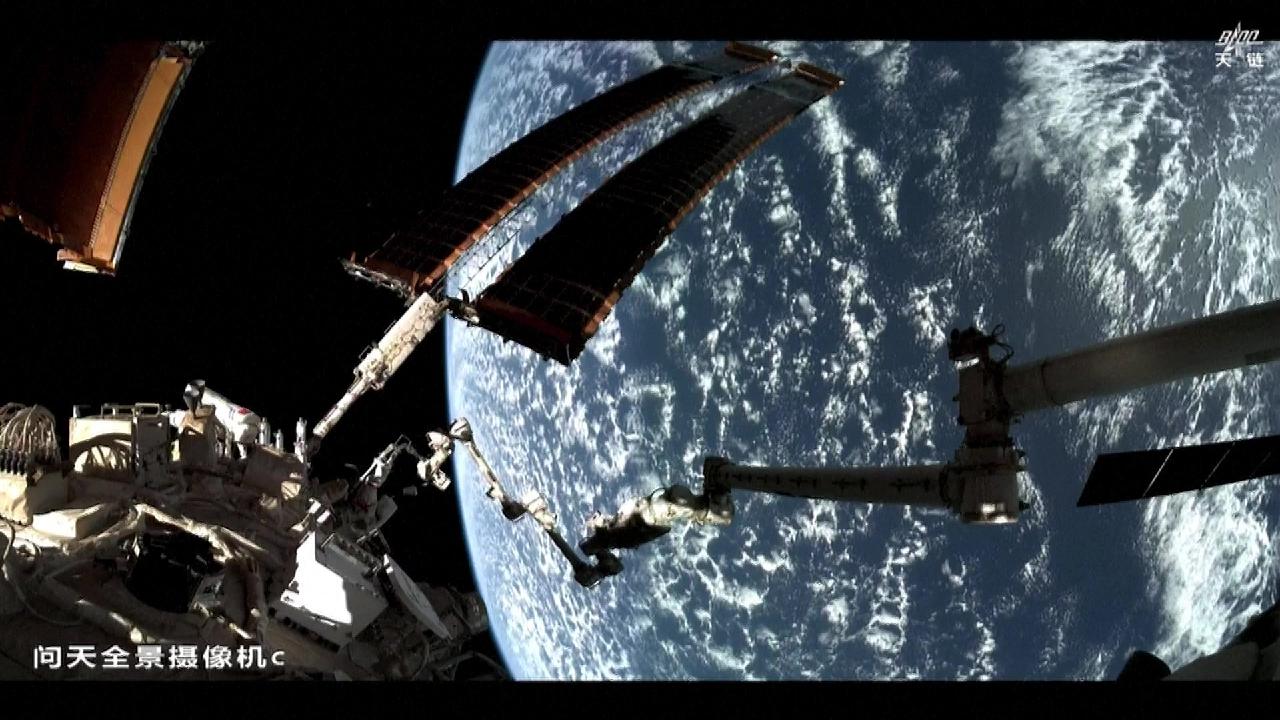Exploring China's Space Mission: Reflecting on the Shenzhou-18 Crew's Journey
China's Shenzhou-18 mission is approaching its end following a successful six-month journey aboard the nation's space station. The mission featured important scientific experiments and two record-breaking spacewalks, culminating in the return of three taikonauts to Earth on Monday.

Shenzhou-18 marks the 32nd flight mission in China's human spaceflight program and recognizes the third crewed mission during the space station's application and development phase.
As per the China Manned Space Agency, the crew will land at the Dongfeng Landing Site located in north China's Inner Mongolia Autonomous Region.
Here’s a recap of significant events that took place during their mission.
**Mission Launch**
On April 25, the Shenzhou-18 manned spacecraft was launched from the Jiuquan Satellite Launch Center in northwest China, carrying three taikonauts—Ye Guangfu, Li Cong, and Li Guangsu—on a six-month mission to the nation's space station. The next day, the crew met with another team of taikonauts, marking the beginning of a new round of crew handovers in orbit.
**Spacewalks Completed**
Throughout their mission, the Shenzhou-18 crew conducted two spacewalks. The first occurred on May 28, achieving the record for the longest single spacewalk by Chinese astronauts, which lasted around eight and a half hours. The team successfully installed space debris protection devices, aided by the station's robotic arm and a supporting team on the ground.
Their second spacewalk took place on July 3, where Ye Guangfu and Li Cong spent approximately 6.5 hours completing several tasks while Li Guangsu monitored from inside the space station. They again utilized the station's robotic arm to install protective devices for pipelines and cables and conducted an extravehicular inspection before safely returning to the Wentian lab module.
Earlier in May, the crew had installed protective devices for the Mengtian lab module’s external cables, while their July task focused on similar installations for the Wentian lab module and the Tianhe core module.
"The purpose of this extravehicular activity is to enhance the long-term safety and stability of the space station by installing protective devices on extravehicular equipment, mainly cables and pipelines," noted Liu Ming, an assistant research fellow at the China Academy of Space Technology, in an interview.
**Scientific Research Developments**
During their mission, the crew took part in various scientific experiments across multiple disciplines such as basic physics in microgravity, space material science, and space life sciences. A significant achievement was the establishment of an "aquarium" to raise zebrafish in microgravity, marking a milestone in China's in-orbit aquatic ecological research. The study investigated the space environment's impacts on growth and system balance, revealing abnormal swimming behaviors in zebrafish, such as inverted swimming and circling, under microgravity.
The crew also performed plant cultivation studies to explore changes in plant stem cell functions and gene expressions in a microgravity setting, supporting efforts to develop crops suitable for extraterrestrial conditions.
In addition to aquatic and botanical experiments, they conducted molecular research related to the origins of proteins and nucleic acids.
Within the national space laboratory, the crew engaged in experiments focusing on space material science, microgravity fluid physics, and combustion science. They completed tasks such as swapping out the gas burner in the combustion cabinet and exchanging experimental samples in the fluid physics cabinet.
To enhance their skills, the astronauts utilized a metacognitive training system for image recognition tasks and operational tests under varying conditions while continuously monitoring their health through routine medical checks.
**Return Preparations**
As the end of the Shenzhou-18 mission approached in late October, the crew entered the return preparation phase, finalizing tasks like processing experimental data, checking equipment statuses, and transferring remaining supplies.
By mission's end, all planned objectives were achieved, and arrangements for their homecoming in Inner Mongolia were set. On Sunday at 16:12, the Shenzhou-18 spacecraft separated from the space station. Before leaving, the crew completed a handover with the Shenzhou-19 crew, which had been launched on October 30 for another six-month mission.
Thomas Evans for TROIB News
Discover more Science and Technology news updates in TROIB Sci-Tech












